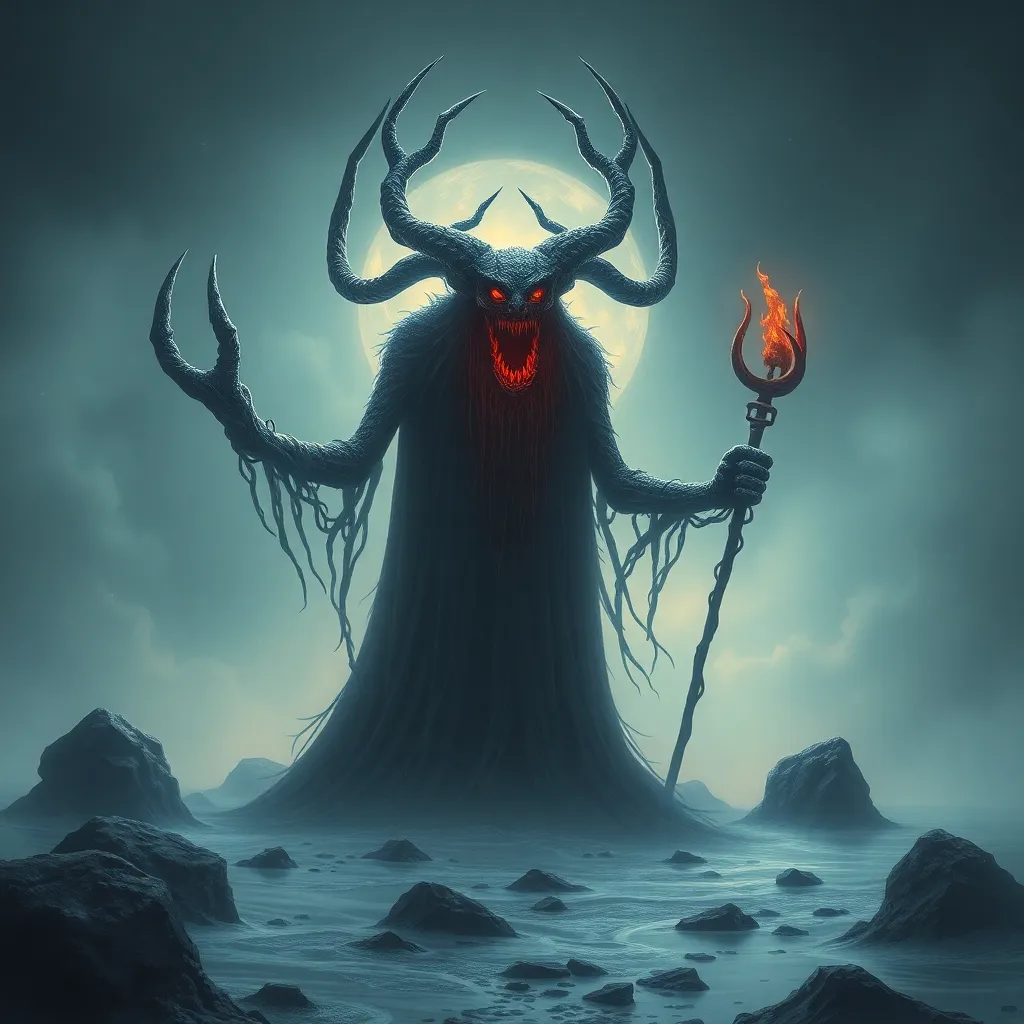Cursed by the Cosmos: The Most Gruesome Divine Punishments
I. Introduction
Throughout history, divine punishment has served as a powerful narrative tool within various cultures, offering a means to explain the unexplainable and enforce moral behavior. From the vengeful gods of ancient myths to the cosmic laws that govern karma, the concept of being cursed by the cosmos is a recurring theme that echoes through the ages.
This article aims to explore historical and mythological examples of gruesome divine punishments, shedding light on how different cultures interpret justice meted out by higher powers. By examining these stories, we can gain insight into the values and beliefs that shaped societies and their understanding of morality.
II. The Concept of Divine Justice
Divine justice refers to the notion that moral order is maintained by a higher power, often manifesting through punishment for wrongdoing. In mythology and religion, this concept is significant as it establishes a framework for understanding humanity’s place in the universe.
The moral implications of divine punishment are profound, as they often serve as cautionary tales that emphasize ethical behavior. These stories illustrate the consequences of hubris, betrayal, and immorality, urging followers to align their actions with cosmic laws.
When comparing divine justice to human justice systems, one can note several key differences:
- Scope: Divine justice often encompasses eternal consequences, while human justice typically aims for rehabilitation.
- Authority: Divine punishment is enacted by gods or cosmic forces, whereas human systems rely on societal laws and norms.
- Motivation: Divine punishment can reflect moral absolutism, while human justice can be influenced by social constructs and context.
III. Ancient Greek Punishments: The Wrath of the Gods
In ancient Greek mythology, the pantheon of gods was known for their capriciousness and willingness to punish mortals for their transgressions. These stories served as a reflection of human flaws and the consequences that come with them.
A. Case Study: Tantalus – Eternal hunger and thirst
Tantalus, a once-favored mortal, was punished for stealing ambrosia and nectar from the gods. His punishment was to stand eternally in a pool of water beneath a fruit tree. Whenever he reached for the fruit, it would recede out of reach, and whenever he bent down to drink, the water would vanish. This eternal state of hunger and thirst symbolizes the insatiable nature of human desire and the consequences of betrayal.
B. Case Study: Sisyphus – The eternal struggle of rolling a boulder
Sisyphus, the cunning king of Corinth, was condemned to roll a massive boulder up a hill, only for it to roll back down each time he reached the top. This endless cycle of futile labor represents the human struggle against the inevitable and the futility of trying to outsmart the divine order.
IV. Norse Mythology: The Harshness of Fate
Norse mythology presents a world where fate is woven by the Norns, three goddesses who control the destinies of all beings. This connection between fate and punishment emphasizes the inevitability of divine justice.
A. Case Study: Loki – Punished with venom for his misdeeds
Loki, the trickster god, faced severe punishment after orchestrating the death of Baldr, one of the most beloved gods. As a consequence, he was bound with the entrails of his own son, while a serpent dripped venom onto his face. This torment illustrates the serious repercussions of deception and betrayal among the gods.
B. Case Study: Fenrir – Bound by the gods and fated to bring destruction
Fenrir, the monstrous wolf, was prophesied to bring destruction during Ragnarok. To prevent this, the gods bound him with a magical chain. His punishment reflects the fear of uncontrollable forces and the lengths to which the divine will go to maintain order.
V. The Abrahamic Traditions: God’s Wrath Manifested
The Abrahamic traditions—Judaism, Christianity, and Islam—present a unified view of divine punishment as a means of enforcing moral order among humanity.
A. Case Study: The Plagues of Egypt – A divine response to Pharaoh’s defiance
The ten plagues unleashed upon Egypt were a direct result of Pharaoh’s refusal to release the Israelites. Each plague escalated in severity, culminating in the death of the firstborn. This narrative emphasizes the consequences of oppression and the moral imperative to heed divine will.
B. Case Study: Lot’s Wife – Turned into a pillar of salt as a lesson against disobedience
In the story of Lot’s escape from Sodom, his wife looked back at the city, defying God’s command. As a result, she was turned into a pillar of salt, serving as a stark reminder of the dangers of disobedience and the importance of faith.
VI. Eastern Traditions: Karma and Cosmic Retribution
In Eastern philosophies, particularly Hinduism and Buddhism, the concept of karma plays a crucial role in understanding divine retribution. Karma posits that one’s actions directly influence one’s future, often leading to cosmic justice.
A. Case Study: King Ashoka – Transformation from tyrant to benevolent ruler after experiencing divine retribution
King Ashoka, once a ruthless ruler, underwent a profound transformation after witnessing the suffering caused by his conquests. Embracing Buddhism, he became a proponent of peace and moral governance, illustrating the potential for redemption through divine lessons.
B. Case Study: The story of Kisa Gotami – A lesson on impermanence and suffering
Kisa Gotami, grieving the death of her child, was taught about the universality of suffering and the impermanence of life through the Buddha’s teachings. Her journey from despair to enlightenment highlights the importance of understanding the nature of existence.
VII. Folklore and Legends: Localized Divine Punishments
Folklore often serves as a reflection of cultural values, encapsulating moral lessons and societal norms through tales of divine punishment.
A. Case Study: The Legend of the Headless Horseman – A tale of vengeance and cursed existence
The Headless Horseman, a figure from American folklore, is said to be the spirit of a soldier who lost his head in battle. His restless spirit seeks vengeance, symbolizing the consequences of violence and the unresolved nature of revenge.
B. Case Study: The Weeping Woman (La Llorona) – A cautionary tale of loss and punishment
La Llorona, or the Weeping Woman, is a ghostly figure in Latin American folklore who mourns her lost children. Her tale serves as a cautionary reminder of the consequences of one’s actions, particularly regarding motherhood and loss.
VIII. Modern Interpretations: The Legacy of Divine Punishment
Ancient stories of divine punishment continue to influence contemporary literature, film, and art, serving as a source of inspiration and reflection on moral themes. The archetypes of punishment and redemption resonate with audiences, illustrating the enduring nature of these narratives.
From dystopian novels that explore the consequences of moral failings to films that depict the struggle between good and evil, the legacy of divine punishment remains relevant in modern storytelling. These tales remind us of the complexities of justice and the eternal quest for moral clarity in an often chaotic world.




